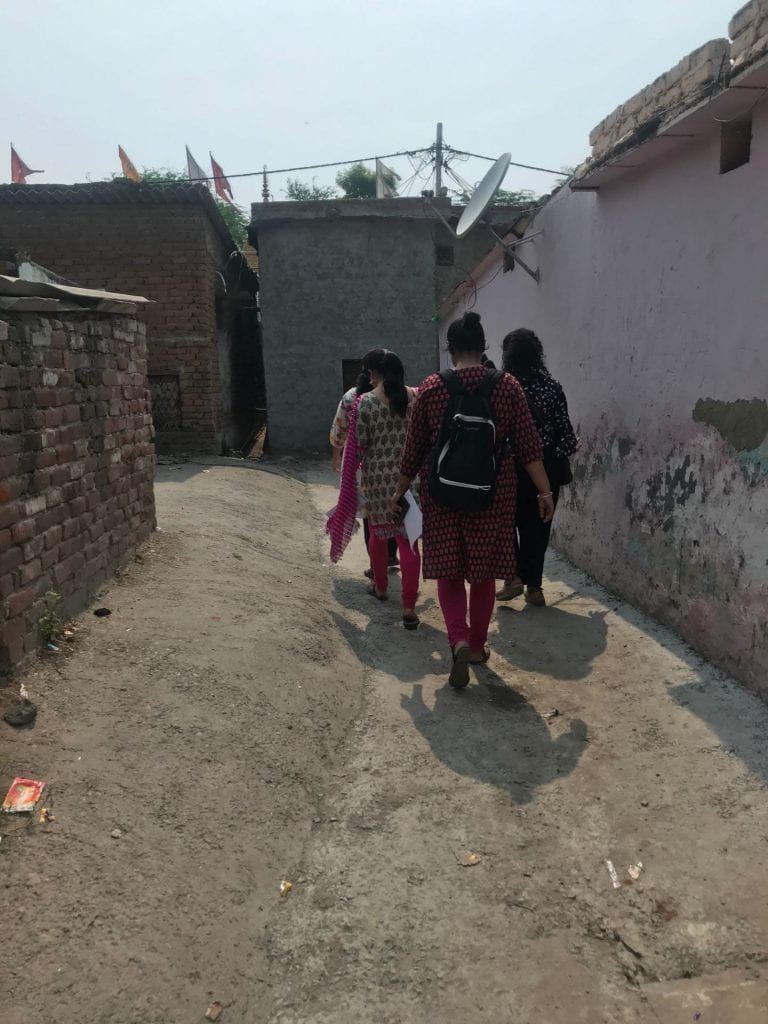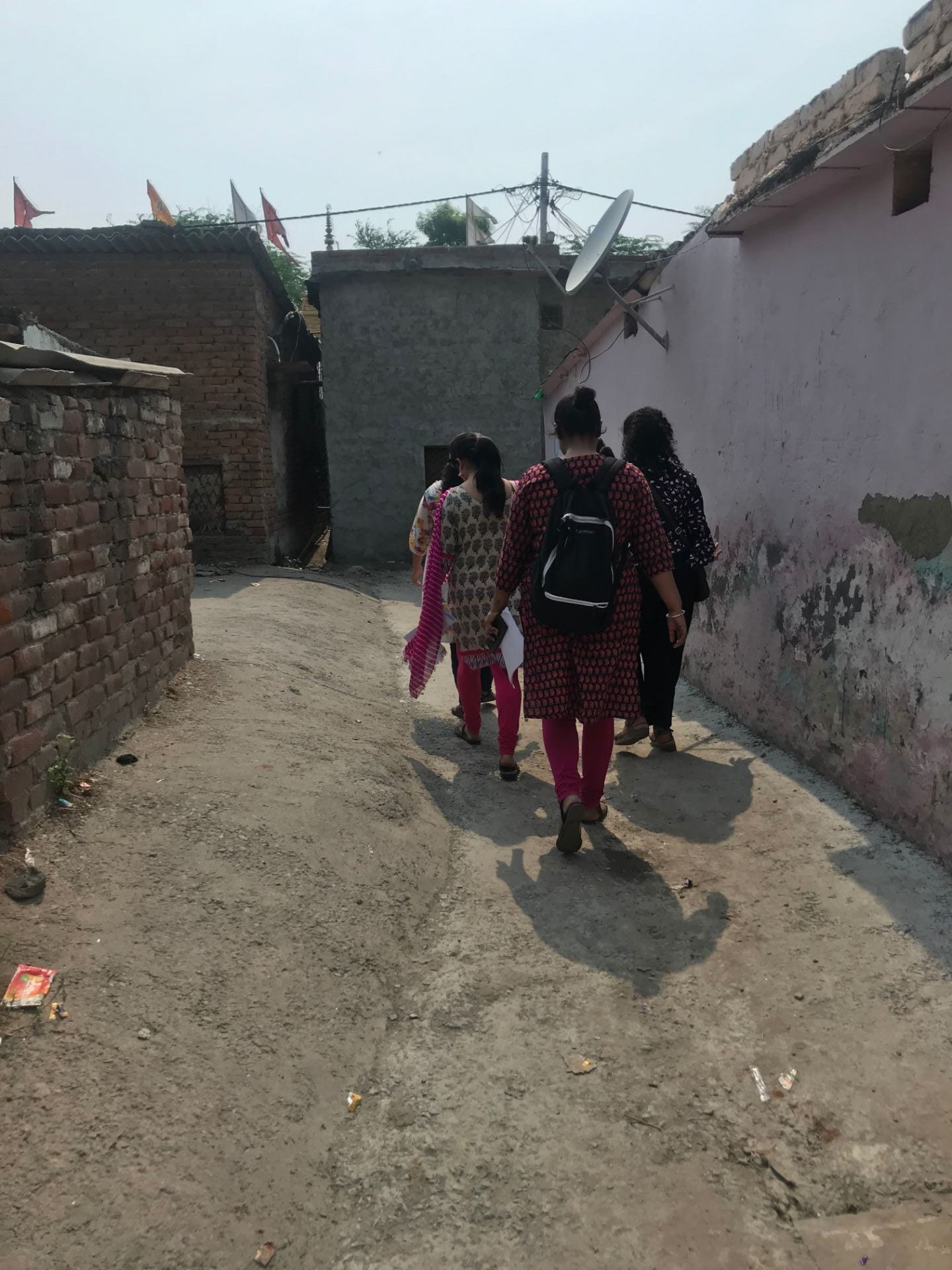A Tale of Experiences and Learning
Violence against Women, a topic which has recently generated a lot of conversations in the Indian society, is the base of our research study. The Indian feminist movements have been seen to rise in waves, carved by various cases of violence against women, from the Bhanwari Devi case, Roop Kanwar’s immolation, to the most recent Nirbhaya gang-rape (brutal gang-rape on a moving bus in Delhi). Such cases have seen the uproar of masses; leading to the judicial system taking a step forward towards a less paternalistic state, like the introduction of the Vishakha Guidelines, influenced by the Bhanwari Devi rape case, and the introduction of fast track courts, post the Nirbhaya incident.
In the pursuit of our research study, we sought to understand the masses’ opinions about crimes against women, their sources of information about such crimes, along with the police force’s understanding of the changes in the system in recent times – thus tracing a trajectory of crimes against women from the heinous Nirbhaya rape case, up until now. In trying to do so, our team engaged in conversations with people from the police force and those from urban slum clusters, and surveyed the youth of Delhi. This wide sample was chosen to give us a holistic view of what crimes against women means to people in Delhi, the national capital of India.
We started out with understanding what the youth think of violence against women (VAW), especially reporting of VAW. After developing survey instruments entailing vignettes, we dipped our toes into the field with the pilot in Devli (a small village in South Delhi), after which we were ready to immerse ourselves fully. The pilot at Devli came with a lot of unexpected twists; we went in for a pleasantry meeting, and ended up conducting a pilot survey with 80 students (details provided in part 1 of this blog). However, this pilot gave us confidence to conduct the surveys in the proceeding days, and reassured us that we could overcome any challenges that the field throws at us. What followed suit was a series of rollouts across regions in Delhi.
My favorite experience came from two such rollouts; one in the Delhi Cantonment area in New Delhi district and one in Vikaspuri, in West Delhi. As I entered the Cantonment area of Shekhawat Lines, this unknown realm reminded me of ghost towns, with dilapidated buildings covered in moulds, and lawns with dried grass. An eerie silence engulfed the whole area with not a single person within eyesight. However, in the middle of the Cantonment lay an extravagant, lush, gated area called the Aahwan Centre.
Out of all the vocational centers that I had gotten the chance to visit until then, it was safe to say that the one in the Aahwan Centre was the best. The two courses taught there were beauty and wellness, and computers. The laboratories for both the courses were equipped with the best instruments, the classrooms complete with detailed charts about the coursework, and projectors for visual aid. As I explained the nature of the research study to the trainers at the centre, I was forewarned that no such crimes occur within the cantonment area, because of which respondents may not be able to relate to the questions. However, it was later found that the students seemed moved by the situations presented to them and could recall incidents that were similar to those they were reading about in the questionnaire. I was told by one of the respondents that they found the survey thought-provoking because such situations are the harsh reality of being a woman in Delhi.
The rollout at Vikaspuri was scheduled with a centre of PMKVY, which caters to people with hearing disabilities. As I reached the location of the rollout with a sign language interpreter, I was warned by the Centre head that instead of the estimated 40 minutes given to complete the survey, the students may take anywhere up to 2-3 hours to complete it, because of the situation-based questions and the low reading abilities of the students. This meant that every word of the questionnaire needed to be interpreted to the students in sign language. However, the coordinator was very impressed with the questions and was keen on administering it to her students, because they never get to talk about such things. She also expressed interest in incorporating such themes into their course syllabus to create awareness amongst her students about the issue of violence against women. This thought itself was quite motivating and rewarding for us!
After getting acquainted with the Centre head, we went on to administer the questionnaire. It was a massive task for the interpreter to individually address doubts of 40-odd respondents, who had many questions of their own about the survey. The students, however, seemed quite moved by the situations presented to them. To be able to effectively translate the questions into sign language required a lot of minute attention to detail, along with immense amounts of patience. We set out with the aim of being done with the survey in the usual one hour timeframe, but ended up spending about 3.5 hours administering the survey. This made me think of how I’d taken for granted the reading abilities of 18-30 year olds, while on the other hand, people with hearing disabilities lack proper schools or funding for schools from the government, which results in readings levels of primary school students. Nonetheless, their enthusiasm to participate in the survey gave us energy and optimism, and thus we were able to carry out the survey effectively.
The field experience that I have gained over the last month through this research study has acquainted me with nooks and crannies of Delhi that I had never been to despite residing in Delhi for more than two decades. Having grown-up in the quintessential city life of Delhi, I was embarrassingly unaware of these other ‘Delhis’ that existed in my own backyard! While each such Delhi was distinct in its own respect, what connects us all is the call/urge to mitigate VAW across spaces and communities…

Abhilasha Sahay, Phd Economics 2020
Sigur Center 2019 Field Research Fellow, India


